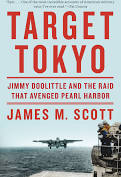Target Tokyo (2016 ) by James Scott
GoodReads meta-data is 672 pages, rated 4.1 by 865 litizens.
Genre: History.
Verdict: Genius at work.
From 7 December 1941 the bad news began and continued: Pearl Harbor, Guam, Wake, Attu, Manila, Bataan, Corregidor, Malaya, Singapore, Puna, HMS Prince of Wales and Repulse with more everyday. In that context Doolittle’s Raid in April 1942 was a welcome harbinger of things to come.
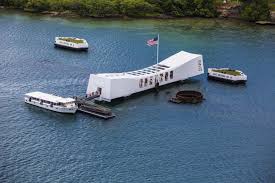
While the man had a PhD he was not that Dr Dolittle. Get that, and get it straight!
James Doolittle (1896-1993) caught the flying bug as a child and went to Ohio as a teen to learn to fly where his teacher was Orville Wright. He signed up for the US Army Air Corps in 1917 but did not make it to Europe, however, he stayed in the Air Force because that was where the airplanes were and at the time the Air Force was trying to establish itself.
He became a test pilot avant le mot and soon was a celebrity, making and breaking flying records of speed, distance, endurance, and complexity. Much stemmed from his reckless, devil-may-care attitude in the air but as he matured he earned an undergraduate engineering degree from the University of California, and then a PhD from MIT. He began to rely on homework, stress tables, meteorological reports, wind tunnel tests, vector analysis, and pounds per square inch measurements while devising new instruments to fly further, faster, and in impossible circumstances.
If Antoine Saint-Exupéry was the poet of the sky, Doolittle was the scientist. Among the developments to which he contributed are the barometric altimeter, the aerial gyroscope, and avgas. When he married and children came he needed more money than the Air Force could pay so he sold himself to Shell Oil where he developed avgas for the burgeoning airline industry. It boosted power on existing aircraft by 35% and sold itself almost overnight.
He also pioneered the hood, that is, flying blind on instruments alone. To do this he designed and built prototype instruments and controls and then did demonstrations, taking off, flying a fixed course, and landing exactly back at the point of departure. He did not patent any of his innovations and so had no financial reward. That was not the point. The point was to fly.
By 6 December 1941 he was certainly the most famous aviator in the country, succeeding Bill Mitchell who had died and Charles Lindbergh who had gone into politics. He had proven three things: he was an innovator, he could do things with an airplane no one else could, and he could teach others to do them, too.
Now add the insight of a naval staff officer that medium range bombers might conceivably take-off from the deck of an aircraft carrier. The seeds were sown for an attack on Japan.
There were many technical problems to overcome: the bombers need twice the length of the deck to take off, their flight range was half the minimum required to get to safe place in China. To get the bombers to Japan the aircraft carrier would have to be within 400 miles of Target Tokyo, well within the range of Japanese patrols. With its deck crowded with bombers, the carrier would be defenceless. To protect it with escorts would add ships and increase the chances of detection and risk even more precious assets. And so. For every solution there was a catch.
There were also strategic objections to overcome. Did the US Navy want to risk one of its few aircraft carriers and its crew of two thousand salts on an untried mission of no lasting importance? Could such a complex plan be kept secret? Would the Army Air Corps give up scarce bombers to such a cockeyed mission? What was the weather like in the North Pacific? Who had maps of Tokyo? Most of all, could take-off even be done?
From the start one thing was obvious: it was a one-way mission. Taking off from a flight deck might be possible with modified aircraft, but landing a B-25 on one was impossible.* The arresting gear used for deck landings would rip the tail off the bombers turning them into cannon balls which would then topple into the sea at best, or crash into the command island killing the crews and more.
Aircraft designed to land on carrier have reinforced tails to accommodate the jerk of the arresting line. To manufacture B-25s with that kind of reinforcement would take months, and then with the reinforcement they would be then too heavy to lift off the decks. Always a catch.
More homework followed when Doolittle got the job. He studied the weight of fuel versus the gain of thrust on takeoff and range in the air, factoring in the weight of the fuel tanks themselves, the ship’s speed on launch from the deck. He also considered the body weight of the flight crew and the instruments. He set a maximum weight for the crew members, and stripped the planes of armour, weapons, padding, and much else, including transmitters since radio silence was to be the rule.
He also lobbied hard to get the operational command on the grounds that to train and motivate the crewmen they had to know he was coming with them. This appointment proved to be the hardest sell because General Hap Arnold of the USAF thought Doolittle’s genius was too valuable to risk on what, when all was said and done, was a demonstration. The decisive factor was Doolittle’s reputation. When volunteers were solicited for a secret and perhaps fatal mission there were few takers until his name was mentioned, and then other flyboys were ready to go with the great Doolittle and volunteers flooded in for the unknown. Once that happened, he had to go.
There are many more details about the engineering, logistics, and planning with the attendants SNAFUs. These are best read. Some are a sad reminder that McKinsey management has been with us for a long time. Stories about foot powder and carburettors are reminders that even in war, even in a top priority most secret project, even in a rigid hierarchical chain of command there is scope for individuals to gum up the works by putting process before product, which in this case surely lead to the death of the members of at least one crew. I particularly liked the instance of Doolittle, in a rush, refusing to fill out a feedback questionnaire after the planes were poorly serviced at the Alameda Naval Air Station, and then being threatened with court martial for not providing customer feedback. McKinsey management at its best.
He was in a rush because a host of considerations, chief among them was that the weather in the North Pacific yielded a window over Tokyo of about ten days. It was do it then or miss the chance for months and who knows how far the Japanese might have advanced by then.
While the purpose of the attack was to bolster American morale it had two strategic results that had not been fully anticipated arising from the Japanese conclusion that the B-25s had taken off from barren Midway Island. First, the Imperial Navy was pulled back many hundreds of miles to patrol more intensely the home waters to prevent another attack. Second, Midway became a goal, and attacking it, long on the cards, was rushed with the resulting Japanese defeat because preparations were hastily executed.
Thus, the raid, first, softened the perimeter of Japanese advance making possible the US build up around Midway to be undetected by the Japanese and, second, precipitated a rash Japanese attack that led to a major defeat leaving the Imperial Navy unable to take the offensive again. That latter result meant the Japanese plan to occupy Fiji, Noumea, and Tonga to cut the seaway from Australia and New Zealand to the United States was abandoned.
The book has nearly minute-by-minute details of the flight, bombing, fate, and survival of the crew men. It bulks the book out.
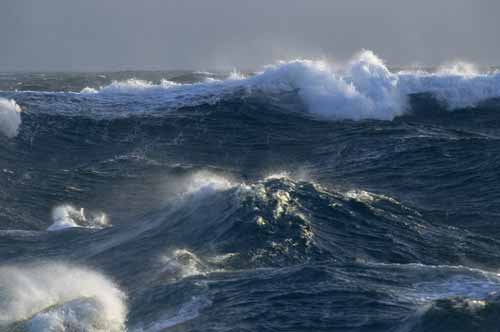
The most difficult task was the takeoff of a fully loaded bomber with vast amounts of extra fuel (see 5 below). None of the pilots had ever taken off from a carrier before. Such was the secrecy that this had not been practiced. The USS Hornet steered into the wind with mountainous heavy seas rolling at it. When the Flight Controller gave the green light to each plane at launch, the prow of the ship was down and at the end of flight deck the forthcoming wave filled the pilot’s cockpit screen. The aim was to time each takeoff so that the aircraft reached the end of the deck as the Hornet rose from the trough. Note also that many of the flight crewmen had been seasick for days.
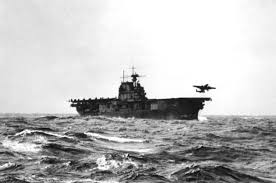
Despite the meticulous planning much went wrong.
- The weather was terrible for man, plane, and ship. Far worse than anticipated based on the sketchy history of weather in the area.
- The plan was to launch the planes at 400 miles from Tokyo and to fly on to China. That was easily possible in the modified aircraft. It was even possible at 600 miles on Doolittle’s calculations. But when detected by Japanese patrols, the flotilla was 800 miles away. The naval commandeer did not want to risk his ships and ordered the launch. It was now or never. Doolittle gave the crewmen the chance to back out but none took it. (There were extra crews onboard.)
- At that distance and in that weather, once airborne there was no fuel to waste in coming into a formation. It became every airplane for itself.
- Nor was there fuel to hold in position and recalibrate compasses which had demagnetised on the steel hulled aircraft carrier. In addition, recalibrating would have required using radios to re-set with the aircraft carrier below, and that traffic would surely now be heard by the Japanese patrols. Once aloft each aircraft flew alone by dead reckoning.
- The rough weather, the iffy takeoffs, and the untried nature of the fuel bladders crammed into every nook and cranny of the aircraft proved unequal to the test and many seeped fuel into the aircraft. They used field dressings to stem the leaks.
- The iffy takeover led to cracks in the plexiglass nose on some aircraft which had been hit by flying debris on the deck. They stuffed flight jackets into the holes.
- The result was that nothing thereafter went according to plan. Though the weather over Japan on the day was fine, the crews were lost, and only with luck found targets.
- Because of the secrecy surrounding the plan they had done little bombing practice, and on the day seldom hit the targets they found. The Japanese public neither expected nor prepared for bombing and crowded the streets to watch what many thought was a drill. Civilian casualties mounted.
- If they could not find the assigned targets in the day time over an orderly Japan, it was impossible to find the Chinese airfield hours later in flak-damaged aircraft in the dark with the fuel indicator on Empty. Some crashed landed on sandy beaches and pastures, while other crewmen bailed out. The only B-25 from the raid that remained whole went to Russia where the crewmen were imprisoned to honour Soviet neutrality with Japan.
- Few of the arrangements in China for the flyers had in fact been made, and in any event they could not find the meeting points. Some were injured in the crashes or parachute landings. Again secrecy hampered the efforts that were made in China. To confuse the Japanese, secrecy remained the order of the day for a long time. Despite the efforts of the free press to reveal all to its enemies.
- The Japanese reprisals in eastern China in the search for the downed flyers were extensive and brutal. One Red Cross estimate put the death toll at 250,000.
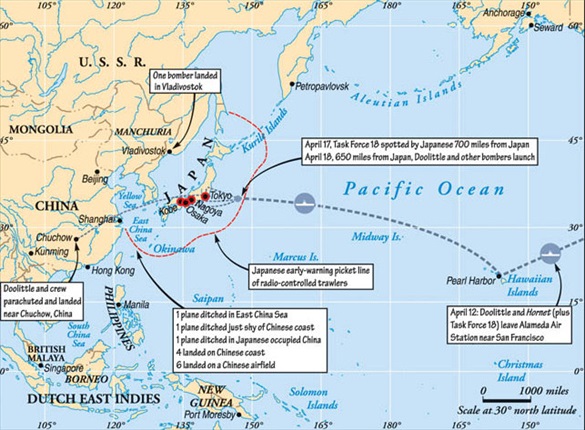
Some of the crewmen were captured by the Japanese, one plane landed in Vladivostok in neutral Russia, and the rest crash landed or bailed out in China, as did Doolittle himself. When he made it t0 safety he bent every effort at recovering his crewmen and that continued throughout and after the war in recovering the bodies of the eight that perished.
Two things I had not appreciated before reading this book emerged. One, that interning Japanese-Americans on the West Coast probably saved some of their lives. The public reaction, outcry, and hostility to Japanese after 7 December 1941 was nearly out of control — and many local officials did not want to control it. Vigilantes were primed and ready to exact their vengeance on anyone whom they took to be Japanese. In the luxury of hindsight the internment is now pompously condemned.
Two, I had not realised just how popular in Japan was the attack on Pearl Harbor. The author amasses an extensive cross section of film and newspaper, as well as memoir material, to show that the Nippon public was delirious with joy at the destruction recorded by the gun camera on the Zeros, including the strafing of the Tripler Military Hospital (the other pink palace on Oahu). Just as earlier the Japanese movie-going public had been delighted by the rapine, murder, and destruction in China, where contests in bayoneting bound Chinese prisoners were filmed like sporting events and shown in Japanese theatres to the cheers of the audiences. Footage is on You Tube for those with strong stomachs. I expect that there are Chinese today who have not forgotten this fact.
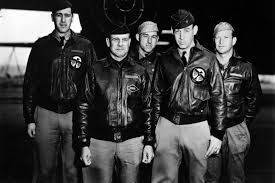
Lieutenant Colonel James Doolittle is easy to spot in the photographs of the time. He was invariably, at under 5’ 2” tall, the shortest man in any picture. Compared the shambling bear Antoine de Saint-Exupéry he was an elf, though their paths never crossed. Or did they, I discovered that Doolittle was in Algeria in 1943 and St Ex was there in February 1944. A lot of time and a big country to be sure.
I noticed that the release date of film I commented on earlier coincided with Doolittle’s Raid and that got me thinking about it and shopping on Kindle for some reading. Of the many titles available I chose this in the hope it would be dispassionate, informative, and explanatory. It is but the minute-by-minute detail was too too much information for this reader.

*The B-25 is called the Mitchell after Billy Mitchell who was courtmartialed in 1925 and drummed out of the army for his endless advocacy of airpower in the next war. After his death all was forgiven. At the time it was the only Army Airforce airplane named for a person.

